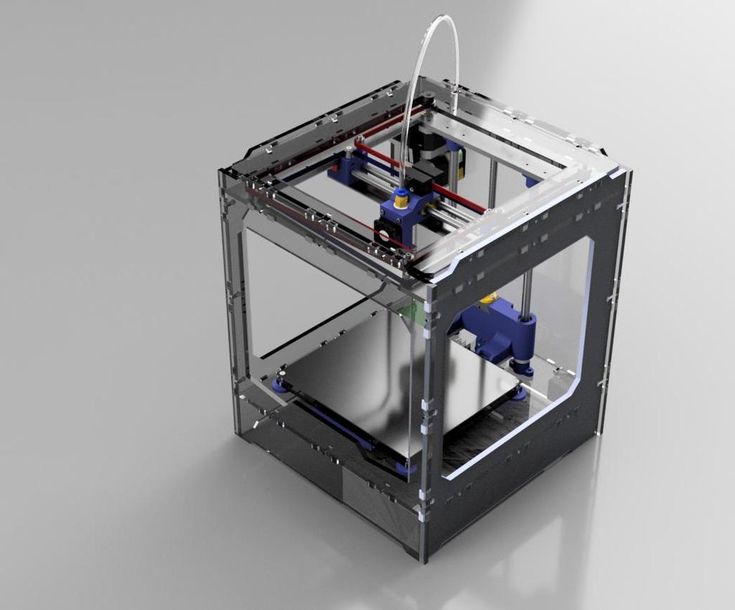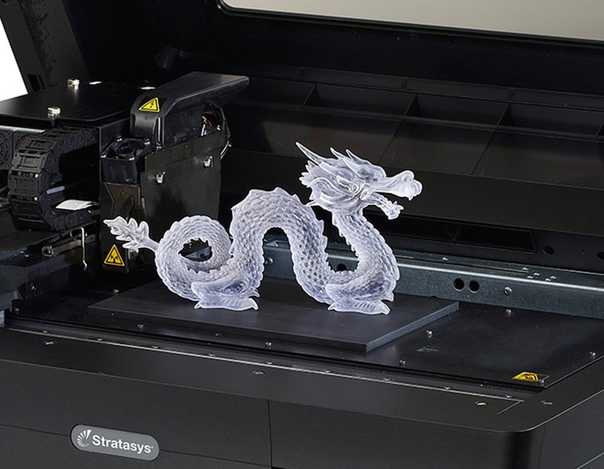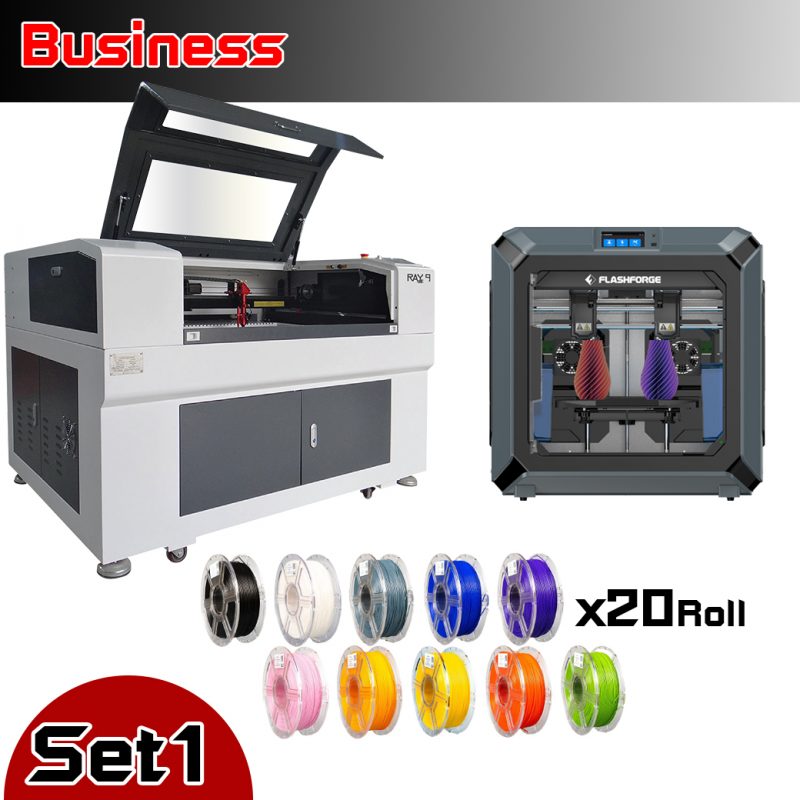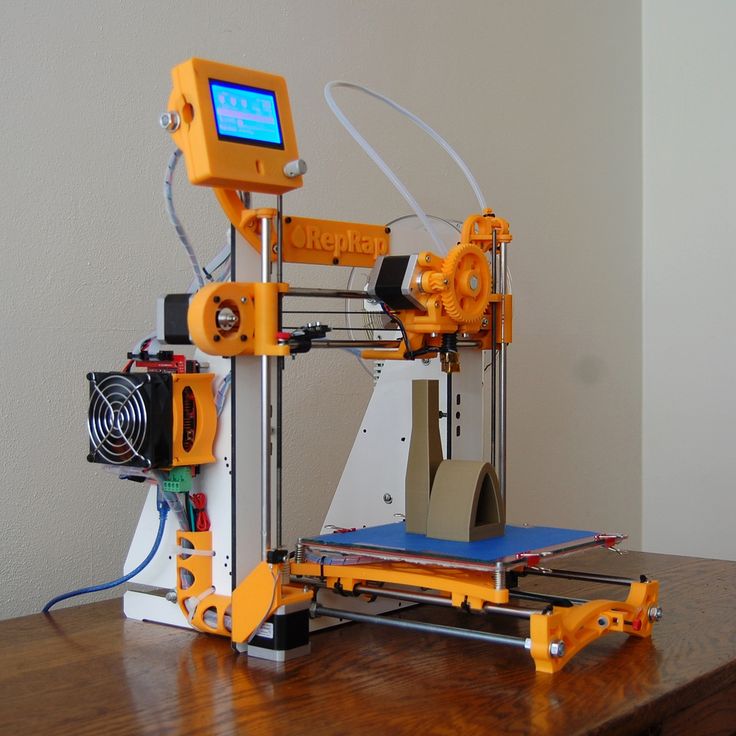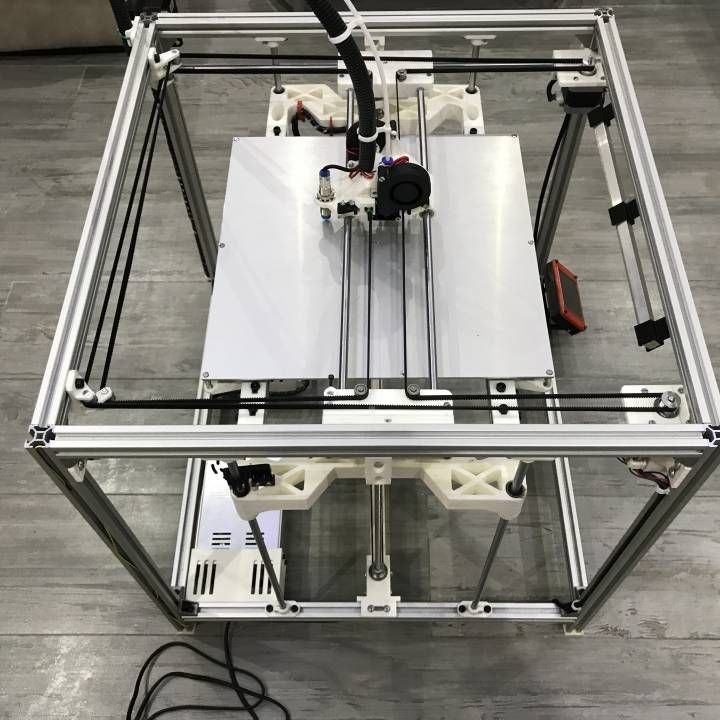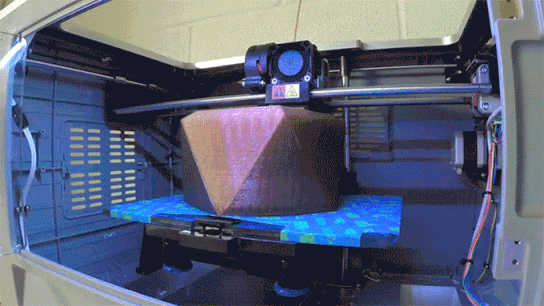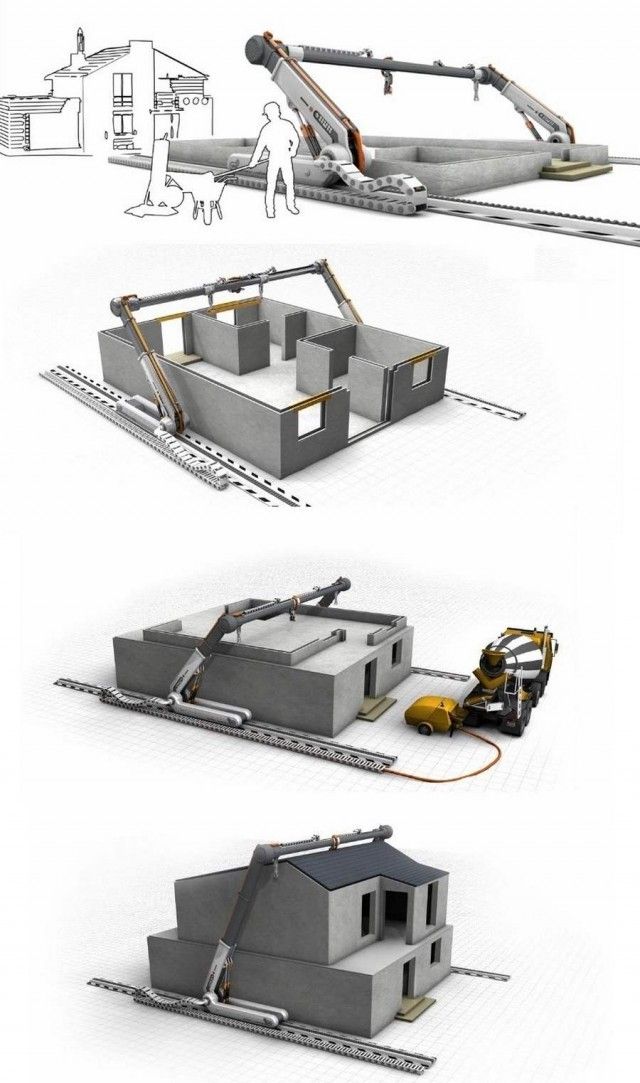3D printer for cakes
This robotic icing-assistant helps you intricately decorate cakes using your existing 3D printer!
https://www.kickstarter.com/projects/digitalpatisserie/cakewalk-3d-a-handy-food-extruder-for-your-own-3d-printer
As a person with moderately good sketching skills (how I got my design degree, I don’t know), and pathetic handwriting (should’ve become a doctor instead, but I don’t deal well with pandemics), the Cakewalk 3D looks like an absolute delight to me! Designed to mount onto your existing 3D printer, the Cakewalk 3D is a handy food extruder that lets you decorate cakes, make meringues, adorn your pizza with ornate cheese patterns, or write your name in guacamole on a burrito. If there’s any food that can be extruded, the Cakewalk 3D can pretty much extrude it, thanks to a stainless-steel food-tube, a helix that pushes the food out like an Archimedes screw, and a Nema 17 motor that runs the extrusions while the entire setup (which gets mounted on the X-Y axis arm of your printer) moves back and forth to create complex patterns that you feed into your printer program.
Think of the Cakewalk 3D as an automated version of your hands and a piping-bag. The extruder holds your piping material, which could be anything from icing and whipped cream to chocolate, honey, meringue, or even savory items like ketchup, guacamole (preferably non-chunky), and veggie puree. Designed to work with most standard 3D printers including the ones from brands like Creality, Anet, Anycubic, Alfawise, Prusa, or any FDM printer, the Cakewalk 3D operates using software you’re already familiar with including the Gcode you need to set the printer paths. All you need to do is prepare your food to a slightly runny consistency (think honey or ketchup) and load it into the extrusion-chamber. Assemble your parts and connect the Nema 17 motor and you’re ready to begin extruding. For the most part, the Cakewalk 3D extruder works only in X and Y axes (you can’t really 3D print sculptures out of ketchup), but if you’ve got something that’s quick-drying like tempered chocolate, meringue batter, or icing, you could potentially work in the Z axis too, creating intricate 3D patterns that are ready to eat or even bake! The Cakewalk 3D kit comes with a silicone mat (that you place on your printer’s bed), so ou can either directly print out meringues on it, or bake a cake in the oven and carry it out when it’s cooled and place it directly on the printer to get it iced.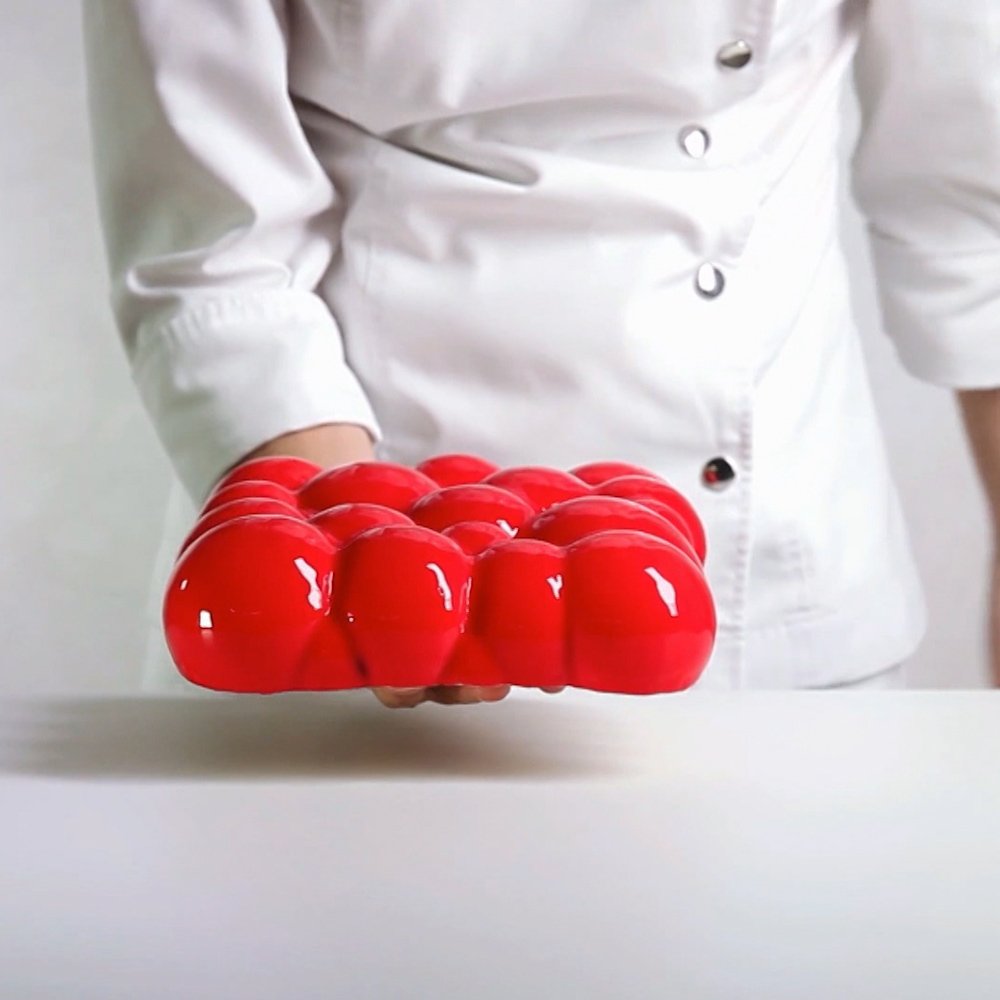 Every part of the Cakewalk extruder is made from food-safe non-toxic materials like stainless steel, silicone, and polypropylene (used in Tupperware), making it safe to use and even easy to clean up afterward (all of the Cakewalk 3D’s parts, excluding the motor, are dishwasher safe too).
Every part of the Cakewalk extruder is made from food-safe non-toxic materials like stainless steel, silicone, and polypropylene (used in Tupperware), making it safe to use and even easy to clean up afterward (all of the Cakewalk 3D’s parts, excluding the motor, are dishwasher safe too).
The Cakewalk 3D makes leaps and bounds in finally being able to ‘print’ food! Whether you’re a hobbyist or a professional, the extruder helps you explore a lot of avenues when it comes to personalized confectionery, or making food with intricate, geometric decorations… stuff that isn’t really feasible by-hand. It also makes replicating patterns really easy, so you could effectively make the same icing design on 20 cakes without any effort or drop in consistency. Moreover, chef, 3D printing executive, and creator Marine Core-Baillais says the Cakewalk 3D is incredibly effective in getting kids to eat leftovers too! Mash your food into a saucy paste and extrude them out in fun shapes before freezing and/or frying them to get your kids to eat food you’d normally have to throw out!
Designer: Marine Core-Baillais
Click Here to Buy Now: $105 $140 ($35 off). Hurry, less than 48 hours left!
Hurry, less than 48 hours left!
Cakewalk 3D – Food Extruder For Your Own 3D Printer
The Cakewalk 3D is a precise, effective and handy upgrade that converts your desktop 3D printer into a food printer.
It enables you to unleash your creativity in the kitchen, producing detailed shapes in a few minutes.
Never Fail a Birthday Cake
Create your own cake lace patterns or custom decorations that you can add on top of the birthday cake. Thanks to the nozzle of 1 mm you can 3D print delicate cake designs.
3D Print Appetizers
Design any shapes on your computer and 3D print them on crackers. Cakewalk 3D even provides you recipes and ingredients to succeed in your first prints, and let you be the inventor of new snacks.
How it Works
Cakewalk 3D is really easy to set up into your own 3D printer and works like your regular plastic extruder.
Compatible Materials
Cakewalk 3D works with many different recipes, as long as they meet the required viscosity.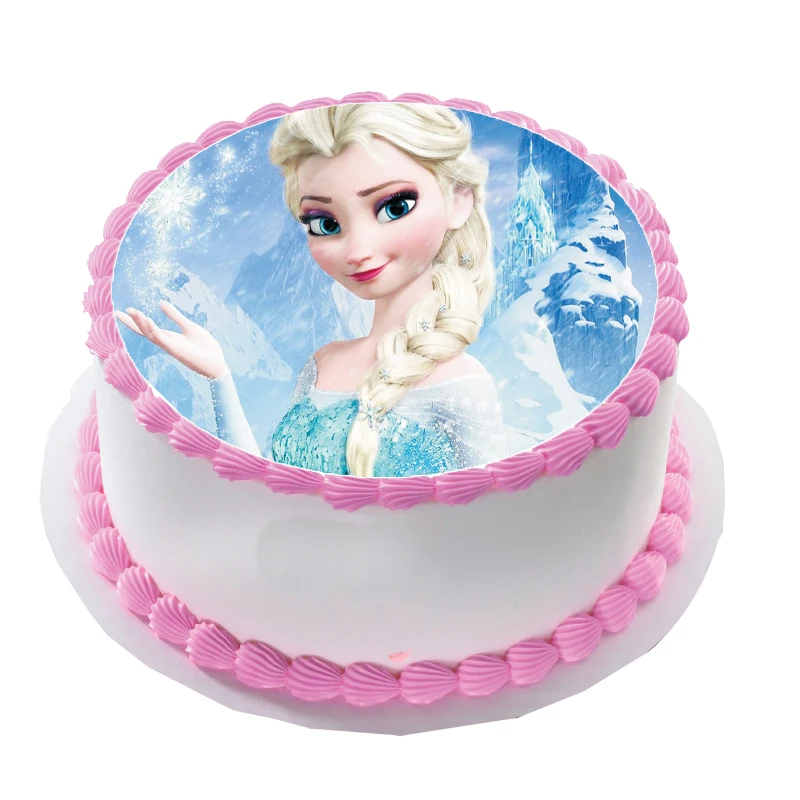 The team has successfully 3D printed with:
The team has successfully 3D printed with:
– Chocolate
– Meringue
– Vegetable Puree
– Ketchup
– Guacamole
– Honey
Click Here to Buy Now: $105 $140 ($35 off). Hurry, only 5/50 left!
the complete list of 3D printers and services -
For all sweet tooth lovers, today we will detail the existing solutions for sugar 3D printing or for ordering it. What forms of sugar are 3D printable? What technologies are used? Can we 3d print sugar at home?
After the article on chocolate 3D printing, we are tackling another pillar of baking: sugar!
Sugar is a great material, essential for making cakes. Sometimes called white gold, its use is often criticized.
The role of sugar in baking
Without wanting to get into controversy, it can however be said that sugar in itself is not dangerous, as long as it is consumed in reasonable quantities. Today, many pastry chefs devote themselves to de-sweetening traditional recipes, or else use less refined sugars.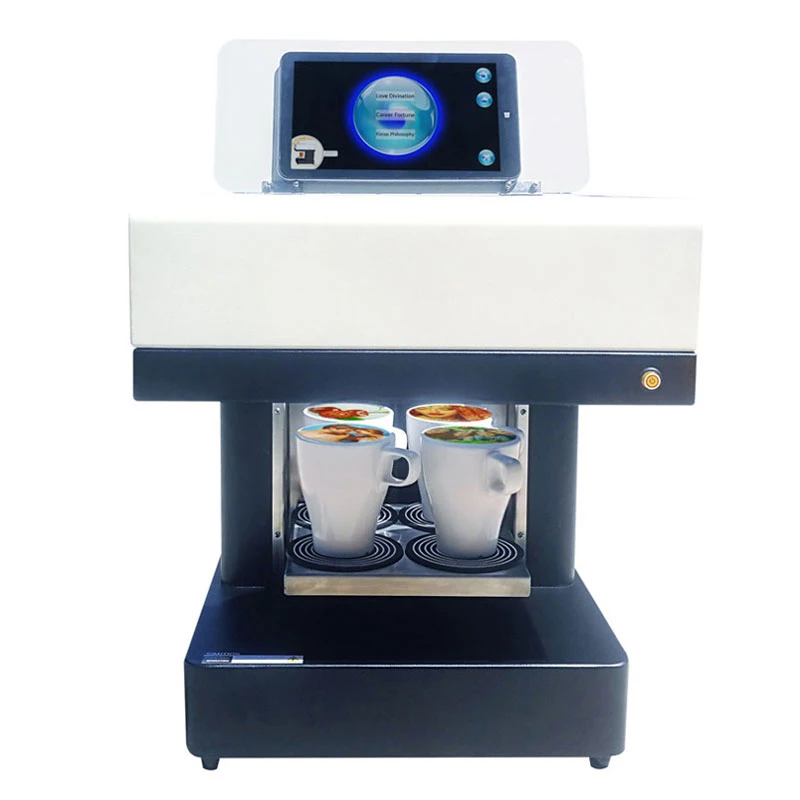
This is what sugar is used for in baking, it:
- brings the sweet flavor.
- softens the acidity and bitterness.
- colors and brings a golden color to pastries during cooking.
- increases the crispness.
- feeds the yeast in yeast dough.
- is a texture agent in meringues, sponge cake and cookies.
- promotes the incorporation of air into battered dough.
- Adds water or alcohol, it turns into syrup and is used to soak, soak
- is used in the manufacture of sorbets (syrup)
- decorate (icing sugar, royal icing, pulled sugar, pastillage)
- is a preservative for fruits, jellies, jams, etc …
Mixed with other ingredients
Sugar is very often mixed with other ingredients. But it can be used on its own to make decorations using its ability to become viscous under heat. 3D printing enthusiasts therefore worked on the different forms of sugar: icing sugar, powdered sugar, caramel, royal icing…
An example of 3D printed sugar by Culinary PrintworksThe full list of sugar 3d printers
Powder-based sugar 3d printers
How to solidify a powder of sugar? 2 techniques have been mainly used in 3D printing
- add a water-based liquid because sugar is soluble in water
- heat the sugar in a targeted manner so as to make it liquid
3D printing sugar by heating
Historically, 3D printing from powdered sugar has been a maker and designer business. Indeed, we cannot talk about 3D sugar printing without talking about Candyfab.
Indeed, we cannot talk about 3D sugar printing without talking about Candyfab.
Candyfab is a hobby project carried out from 2006 to 2009 by Windell Oskay and Lenore Edman. The two researchers built a DIY powder printer with a head that blows hot air, which causes the sugar to melt in a targeted manner, in order to achieve each of the layers.
Demo image from the Candyfab’s websiteThis is an efficient process, but it does not allow perfect control of the shape of the 3D shape. Why ? If you take a good look at the photo above, you may notice that the sugar shrinks and forms a small ball rather than liquefying into a straight line.
Indeed, sugar has immense surface tension! We experienced this ourselves for a few weeks, when we wanted to make caramel with a laser cutting head.
Probably, you must have experienced it yourself when you cook dry sugar in the bottom of a saucepan, it forms little balls which then clump together. There, the same thing happens on the powder bed.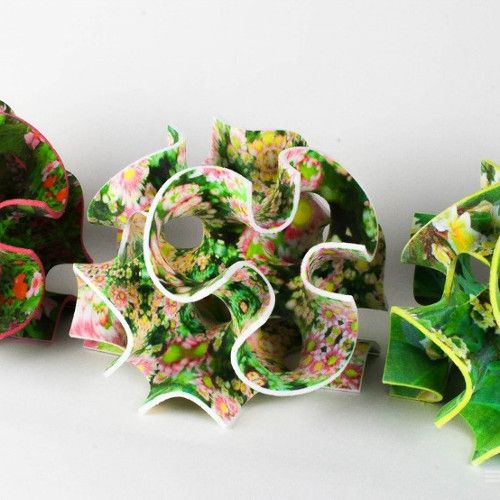
If we were to compare this technique with a pastry process, know that we learn to pour caramel in an inscription made in a bed of sugar in order to create personalized decorations in pastry schools. To my knowledge, no one has ever poured caramel into a bed of powdered sugar layer after layer to achieve a 3D shape. But it might be an idea!
Binder-jetting sugar 3D printing
The technique of binder projection is commonly used in the world of 3D printing with various materials: gypsum, metals. This consists in depositing drops of binder on a bed of powder layer after layer, with a view to their solidification.
And you can use glue, wax, water … it’s also possible to add colorants. Binder projection 3D printing is thus the oldest color 3D printing technique. Several projects have been set up to adapt this techno to the food world.
In 2012, Kyle and Liz von Hasseln created The Sugar Lab, a design studio dedicated to 3D sugar printing.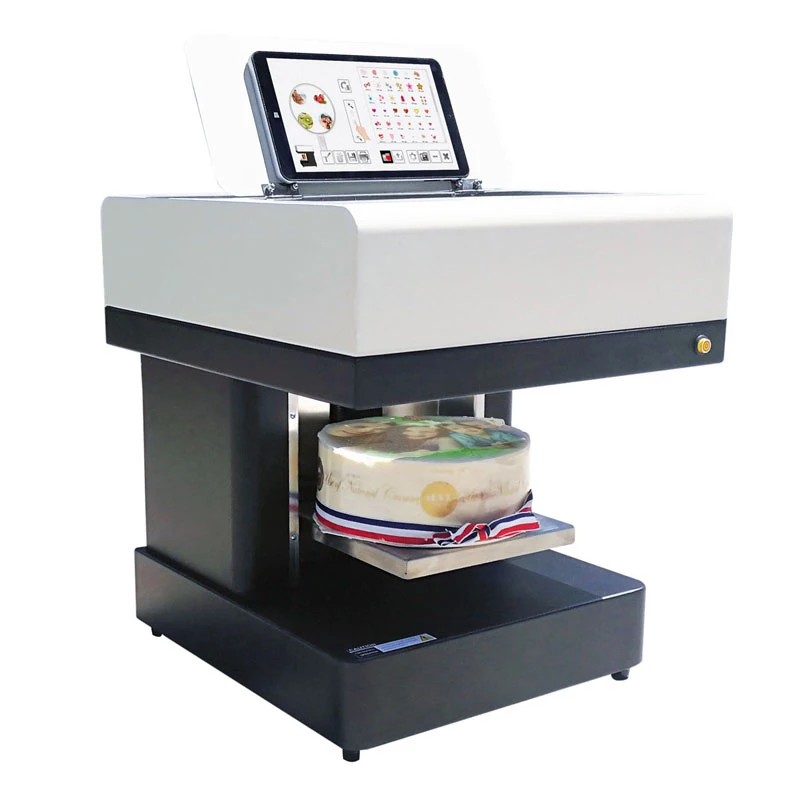 Then in 2013, the studio was bought by 3D Systems which created a culinary division. During CES 2014, visitors (and me in particular!) were able to discover the chefjet and taste their first sweet printing. In September 2020, the project finally announces the launch of a 3D printing service for sugar parts and an upcoming commercialization of the machine.
Then in 2013, the studio was bought by 3D Systems which created a culinary division. During CES 2014, visitors (and me in particular!) were able to discover the chefjet and taste their first sweet printing. In September 2020, the project finally announces the launch of a 3D printing service for sugar parts and an upcoming commercialization of the machine.
At the same time, many fablabs and universities have adapted binder projection 3D printers to test other materials.
The University of West England, the University of Washington have done a lot of testing. In some cases, the results are even public. If you’re looking for recipes to test in your own powder printer, here are a few resources:
- recipes from the Open 3DP department of the University of Washington
- formulas tested and commented on the Reprap forum
After having reviewed the different 3D printing solutions based on powdered sugar (or icing sugar), I suggest that you take a look at cooked sugar!
liquid-based sugar 3D printers
Do you know which property of sugar interests researchers the most? This is because sugar is perfectly soluble in water.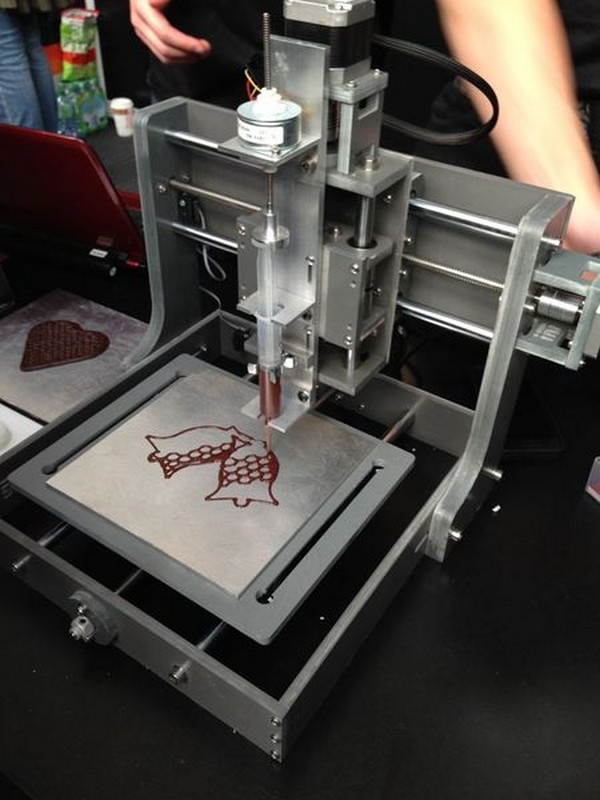 Therefore, it is a perfect backing material for making biological prints. In addition, living cells love sugar and can use the material to perform certain chemical reactions. It is therefore a good candidate for 3D printing of organic tissue.
Therefore, it is a perfect backing material for making biological prints. In addition, living cells love sugar and can use the material to perform certain chemical reactions. It is therefore a good candidate for 3D printing of organic tissue.
Also, when looking for liquid sugar 3D printing projects, we quickly come across applications related to living materials:
- in 2018, the University of Illinois developed a printer for printing isomalt ribbons, which serve as a three-dimensional support for cell culture
- since 2016, the Université de Laval has been working on structures printed in sugar for the construction of an artificial pancreas
And in video, what does it give? Here is a project carried out in 2012, (good news: open source plans are available through Thingiverse.)
Finally here is a video from the University of Illinois whose experiences we cited above. 3D printing takes around 40 minutes.
3D printing takes around 40 minutes.
Royal-icing (paste)-based 3D printers
As in the case of chocolate, in this category, you can find “general” dough extrusion 3D food printers and FDM 3D printers which offer special versions for food.
It is possible to easily make a paste based mainly on sugar, which can be extruded. The most known :
- royal icing (a mixture of sugar and raw egg white)
- fondant and sugar paste (a mixture of sugar and glucose syrup)
- the meringue (a mixture of sugar and whipped egg whites)
- honey and agave syrup are also sweetening liquids (chemically they are not sucrose and therefore they cannot be called sugars)
It is probably possible to print sugar paste on the majority of general-purpose food 3D printers.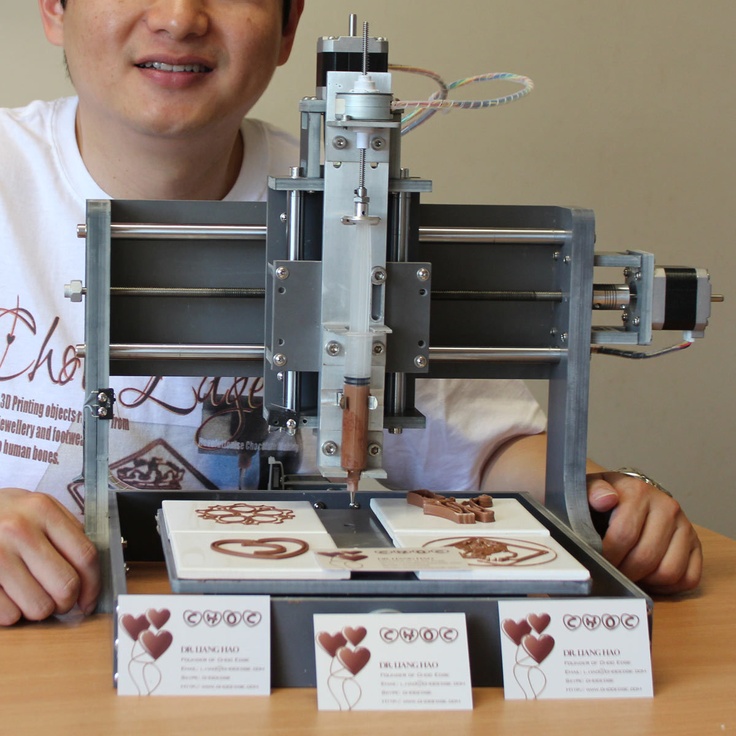 However, I decided to name the ones for which I found a photo.
However, I decided to name the ones for which I found a photo.
- Byflow was developed by Nina Hoff and Jacek. This versatile food 3D printer is well designed to make different 3D prints from extruded pasta. The site offers recipes and an online studio to support you.
- Bocusini by Print2Taste offers marzipan prints (sugar + almond powder)
- Zmorph offers a thick paste extruder to be mounted on its general machine. In 2017, they released this sample use to achieve sweet personalization.
Sugar 3D printing at the Digital Patisserie
After having reviewed the printers available on the market, I suggest that you tell you in a few lines about the experiences that we have carried out at the Digital Pastry Shop.
In the summer of 2019, we did quite a bit of 3D printing using a “syringe pump” system. And we restarted it to make the Rosette of Notre-Dame on the chocolate pie you can see in this video.
But to be honest, we weren’t happy with the results with a syringe plunger. This is what prompted us to imagine Cakewalk 3d and we have made dozens of 3D prints of meringue and royal icing with this simple device that mounts to any Cartesian FDM printer. It was much more satisfying!
It is necessary to deploy a high speed of extrusion to obtain satisfactory results but there is no longer the problem of having to manage the retraction / pressurization after having made a non-printing move.
Royal Icing 3D printing with Cakewalk 3DFinally, this sharing would not be exhaustive our tests with a laser cutting laser on icing sugar. Because of the surface tension we told you about above, we had great difficulty in obtaining interesting results.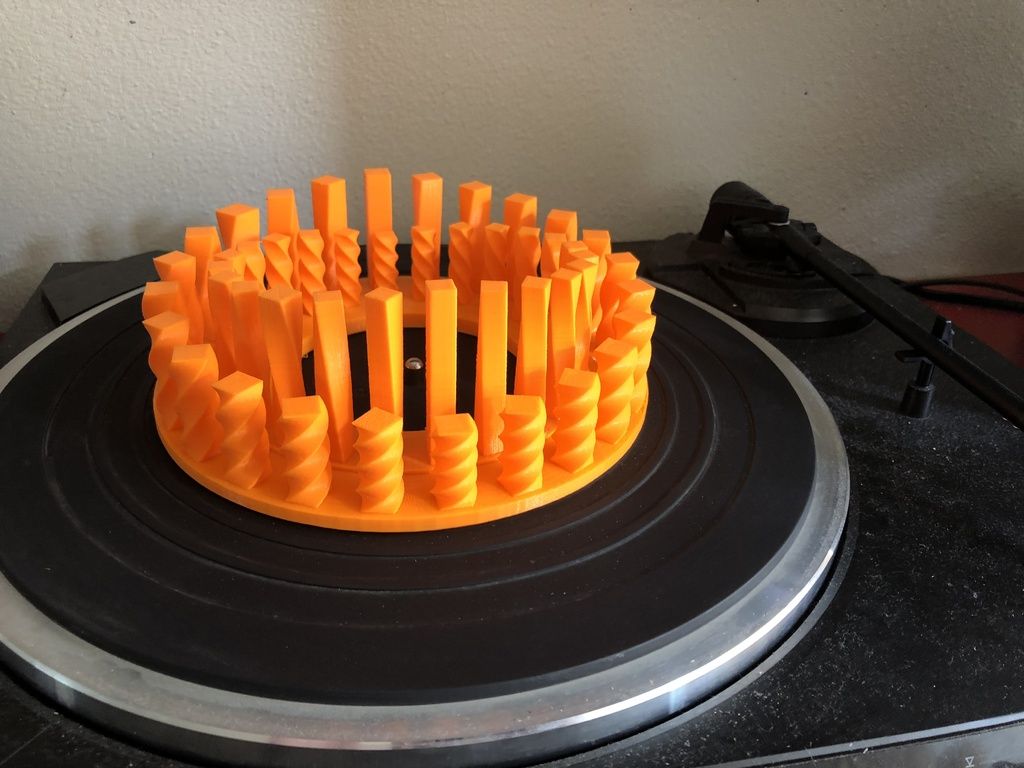 Here is a photo of my attempts to produce a surface by changing the parameters and as you can see, I had not found the solution yet!
Here is a photo of my attempts to produce a surface by changing the parameters and as you can see, I had not found the solution yet!
We have summarized the technologies and 3D printers available for 3D printing sugar. Now let’s move on to the second part of this article: where to order 3D printed sugar?
Sugar 3d printing services
So, curious about tasting 3D printed sugar? Several services have opened in recent years and offer their creation.
As discussed earlier in this article, Culinaryprintworks is the 3D printing service set up by the 3D Systems culinary studio. Based in Los Angeles, it primarily targets chefs and professionals and offers them applications in pastry and mixology.
3D prints of cocktails made by the company Devoray using the binder jetting techniqueIf you like cocktails, we suggest you check out the Canada-based devoray website. They have developed an innovation that allows them to 3d print cocktails ready to be infused into your glasses!
Do you live in Europe? 3Dchef.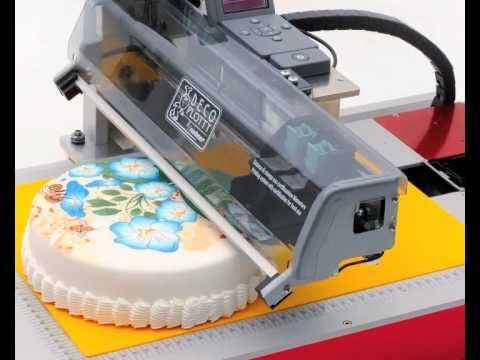 nl is a Dutch site that offers you to make designer cake in colored sugar.
nl is a Dutch site that offers you to make designer cake in colored sugar.
In France, you can contact the company Tridifoodies which has developed its own binder projection printing process and offers different textures of sugar.
An example of sugar 3D printing by TridifoodiesSugar 3D printing at home
So, has this article made you want to try 3D printing of sweet products at home? In this part, we share with you some tips based on our own experience.
Let’s talk of royal icing again…
Already, it should be noted that we are a bit addicted to royal ice cream. If you are not familiar, it is a mixture of icing sugar, egg white and a little acid (citric acid or cream of tartar) in the following proportions:
- 1% cream of tartar (or lemon juice)
- 16% raw egg white
- 83% icing sugar
Depending on the amounts you are preparing, you can mix all the ingredients in a bowl with a fork, or use your food processor fitted with a leaf.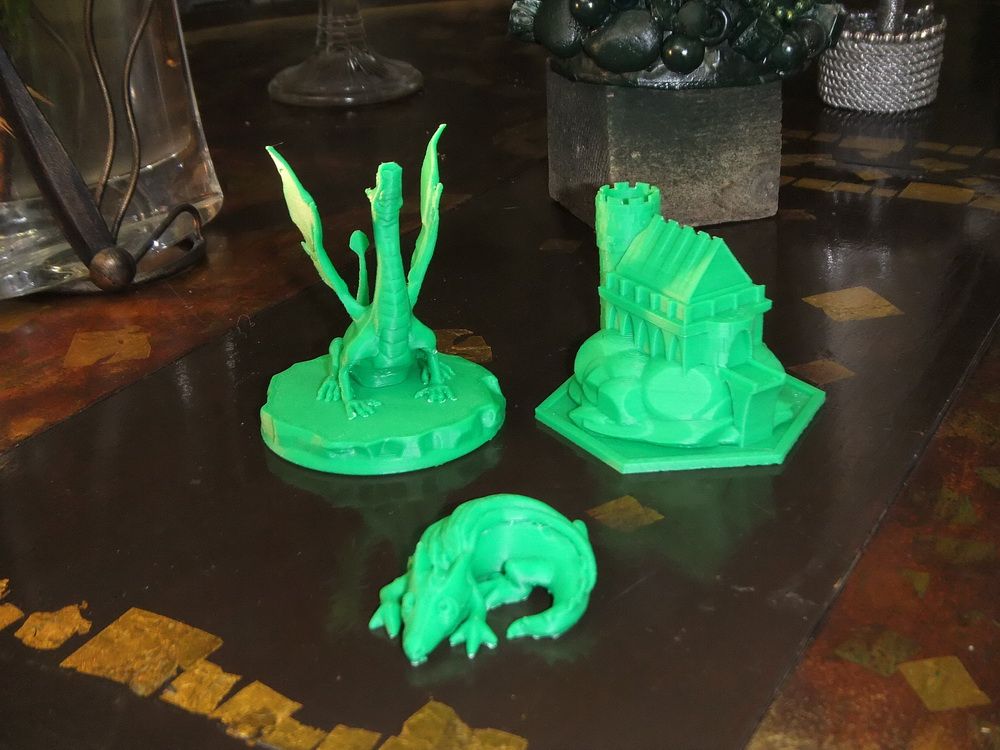
You get a viscous paste that can be perfumed or colored. It is often used to decorate flat shortbread. Warning: it air dries quickly, so you better cover it with a film if you are not using it immediately.
The 3D printer is a mechanization of the classic pastry cone. Here are some constraints to take into account:
- As the material is viscous, it is important to apply some pressure before starting
- Not all 3D files can be printed. Because royal icing solidifies when it dries, but not quickly enough to build layers in most cases.
- Also avoid 3D models that require supports, as you will never be able to remove them cleanly.
- As with all food materials, there is no dedicated slicer. Allow time to play around with the settings.
- A big cleanup of your favorite 3D printer is MANDATORY! Fat from engines doesn’t taste very good… and is sure to give you a VERY stomach ache.
- Take your time to print very slowly. You must allow time for the viscous material to settle (think of honey drips on your toast).
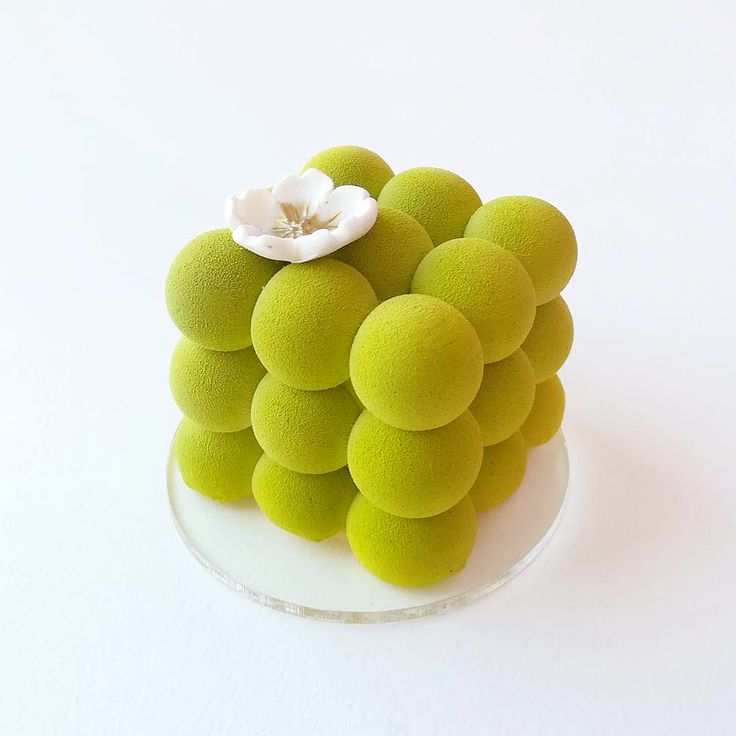 Our reference value is 15 mm / s.
Our reference value is 15 mm / s. - Always allow space around your printer, an area that you can easily clean. Finding royal icing on your raspberry PI is surely not your goal …
If you’re more fan of caster sugar
Do you want to print powdered sugar using the binder projection technique, but you do not have a suitable 3D printer? No problem, we have the solution. This is a maker project that will occupy you for many weeks!
We recommend that you watch the Oasis project on Hackaday which is really well detailed.
For those tempted by the impression of cooked sugar or caramel, there are instructions for the Baricuda Extruder Project on Thingiverse. We haven’t tried to do it ourselves, but there are detailed explanations.
In conclusion, there are quite a few possibilities to taste 3d printed sugar, even if it is less common than chocolate! Let us know your comments and your tests, we will be happy to add them in this article!
90,000 characteristics, pros and cons of each model 07. 04.2021
04.2021
Content
-
- What is a food 3D printer
- Field of use
- used raw materials
- 9000 9000 9000 9000
- Top 10 Best Food Printers: A List of the Most Current Models
- 1. PancakeBot 2.0
- 2. Wiiboox Sweetin
- 3. Choc Creator V2.0 Plus
- 4. Choc Creator V2.0 Plus Food 3D Printer with Cooling Chamber
- 5. byFlow Focus
- 6. Chefjet Pro
- 7. Foodini
- 8. Mmuse – Chocolate 3D Printer Commercial ArtcakesOT7 .90BOT Printer F5
- 10. ZMorph VX
- What is a food 3D printer
- Selection guide
- Output
A food printer is a high-tech device that is used to create culinary masterpieces. The decorative design of food products has reached a new level thanks to the use of modern technologies: high-quality and large-format printing is carried out on cakes, waffles, pancakes and even coffee. Here are the top best 3D food printers in different price categories for people who are fond of cooking. nine0003
nine0003
What is a 3D food printer
The main feature of a food 3D printer is the raw materials used: instead of printing ink, the device is filled with edible ingredients. The database stores a large number of different recipes, and in order to print a dish, you just need to select one of them and activate the printing process. The final product is layered on a work surface or on a plate: it can be baked in the oven or sent to the freezer. nine0003
Application
Futuristic 3D Printed Sugar Candy
Cookies printed with icing
Chocolate logos of famous companies
Cream Photo Print
Buying a food 3D printer is worth the owners of coffee houses, author's bakeries and private workshops. The finished product has a unique shape and bright appearance. Food printers are often used to create custom wedding cakes, cartoon character cookies, Christmas gingerbread cookies, and so on.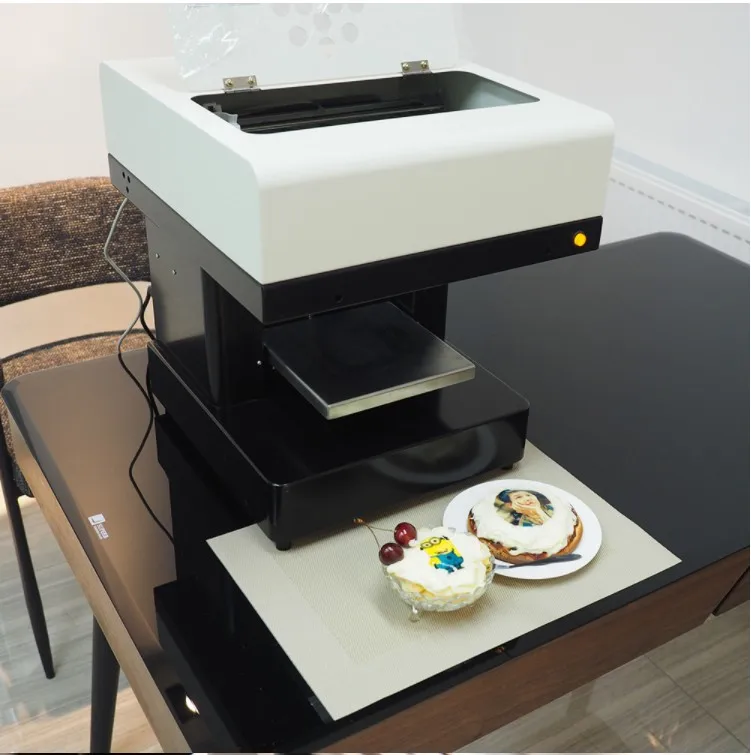 The possibilities of a baker who owns such a device are endless: the main thing is to buy quality products. nine0003
The possibilities of a baker who owns such a device are endless: the main thing is to buy quality products. nine0003
Raw materials used
The following ingredients are used as raw materials:
-
Chocolate without additives and impurities;
-
Mastic;
-
Sugar;
-
Whipped cottage cheese;
-
Vegetable and fruit pastes; nine0003
-
Fish and meat pates;
-
Flour;
-
Cheese, etc.
The confectionery pattern is applied to sugar, wafer or shock transfer paper. The first type has a sweetish aftertaste and aroma of vanilla. Due to the snow-white surface, no additional coating is required: the drawings look bright and clear. The wafer paper is made from rice flour and does not have a special taste, due to the light shade, the final drawings look less clear. Shock transfer paper is completely transparent and is suitable for transferring a design to a product (for example, a cake).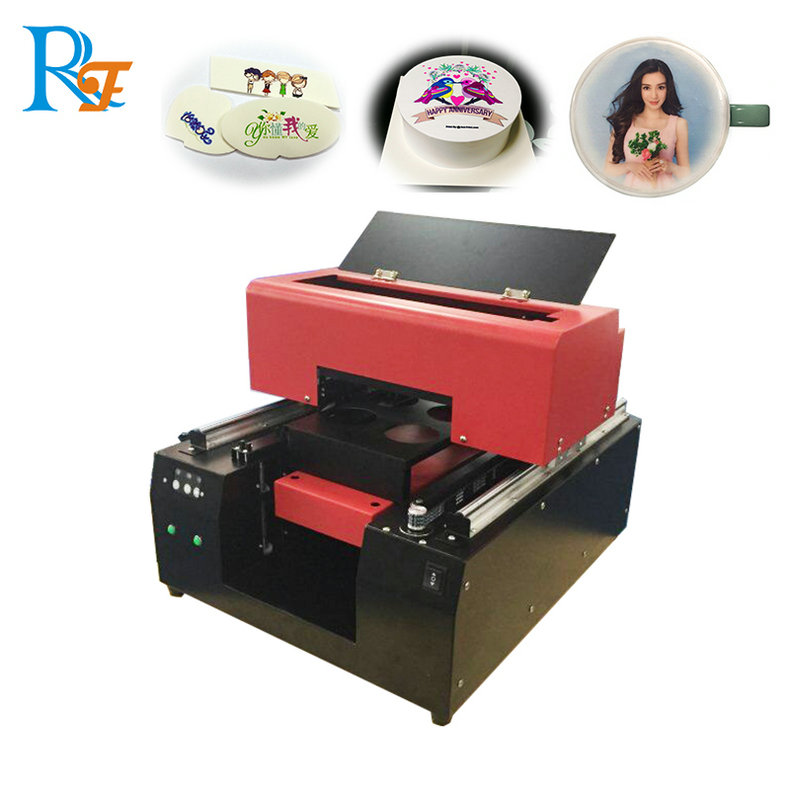 For the packaging of finished products, food-grade plastic for a 3D printer is used. nine0003
For the packaging of finished products, food-grade plastic for a 3D printer is used. nine0003
Interesting! Food printers are involved in waste reduction. Unattractive fruit and confectionery leftovers are used in the preparation of printing mixes. This makes it possible to use the means of production more efficiently.
Types of 3D food printers
Cooking enthusiasts can take advantage of the following food printing devices:
-
Food 3D printers are devices that print dishes whose recipes are listed in a database. The final product is layer-by-layer superimposed on the work surface, and the raw material comes from filled cartridges; nine0003
-
Confectionery printers are used to transfer images onto specialty paper or to design small confectionery products such as candies. Such printers print an image on pre-prepared paper: rice, wafer or shock transfer;
-
Food plotters transfer the image not to paper, but directly to the finished product.
 For example, a plotter is used to transfer an image directly onto a cake. nine0003
For example, a plotter is used to transfer an image directly onto a cake. nine0003
There are several types of food 3D printers:
-
Extrusion - paint is applied to the surface before the dish is created. The process is controlled by the computer with the loaded image. The system has an extruder that heats the food mixture, and the distribution of raw materials depends on the print head. The raw material is loaded into a syringe placed in the head. This means that in order to combine different shades, you have to periodically stop printing and change the syringe; nine0003
-
A carousel-type food 3D printer also has an extruder, but its main feature is the method of feeding raw materials: the containers rotate around the working surface, the supply and dosage of the material used depends on the recipe specified in the program. The storage can contain countless recipes, and operation does not cause difficulties even for an inexperienced user.
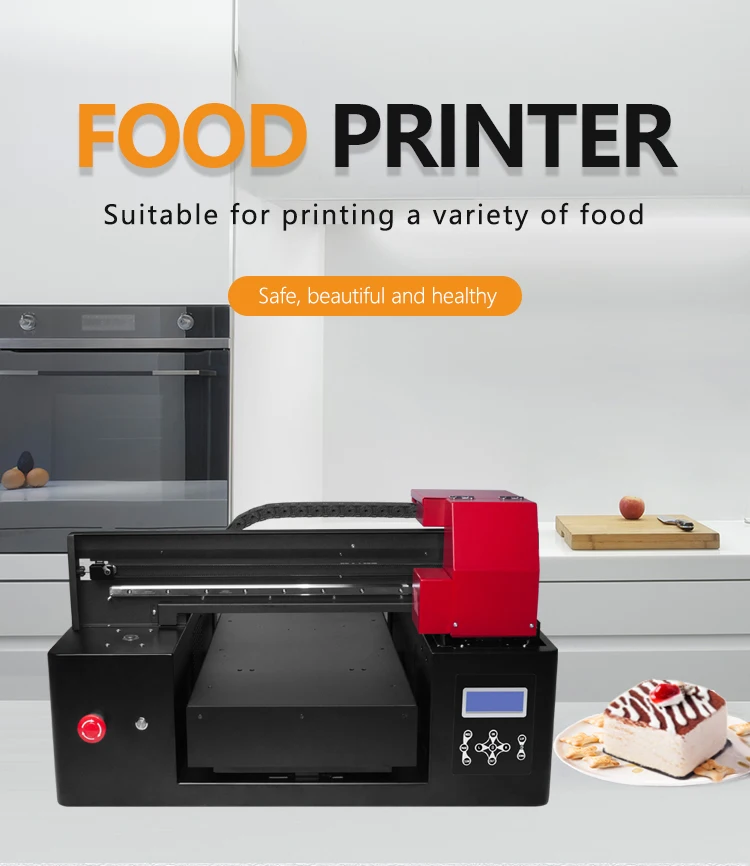
Popular brands
Eminent manufacturers offer the best value for money food 3D printer. Quality devices provide accurate printing, high speed, durability, simplicity and ease of use.
Wiibox
This company manufactures 3D printers with high build quality and high productivity. These are universal mechanisms that fill both chocolate paste and mashed potatoes. Numerous positive reviews confirm the high quality of Wiibox products. nine0003
byFlow
The Dutch company byFlow specializes in food printing technology. The pursuit of excellence helps the company open up new horizons: the technique prints products from spinach, meat emulsion and other materials. High build quality, ease of use and durability - all these characteristics are applicable to the products of this company.
Choc Edge
Choc Edge is committed to revolutionizing the world of chocolate making. Numerous experiments and focus on consumer feedback help to create more powerful devices that provide the optimal temperature for preparing and storing chocolate figures.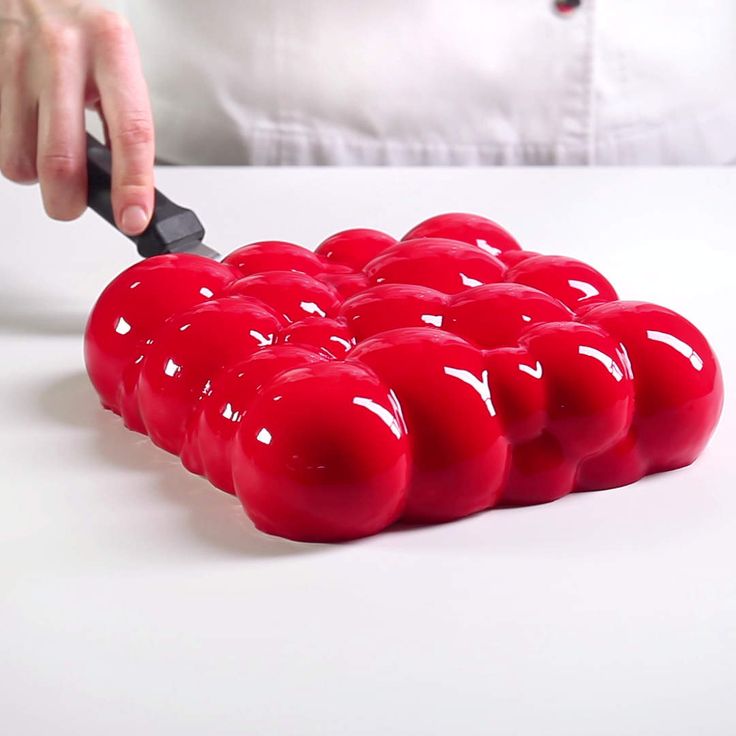
Attention! Printing dishes helps save time on cooking: instead of culinary worries, the user can simply activate the printing process and get on with other things.
nine0134Free shipping
Add to compare
Item added to compare Go
Manufacturer Choc Edge Available on credit. To checkout, add the product to the cart and follow the instructions Go nine0003
Manufacturer Wiiboox Free Shipping
Add to compare
Item added to compare Go
Manufacturer Choc Edge Top 10 Best Food Printers: List of the Most Current Models
Before you buy a food 3D printer, you need to familiarize yourself with the most popular devices on the world market. The top is based on ratings and customer reviews. nine0003
1. PancakeBot 2.0
PancakeBot 2.
0 is easy to use, which means it's suitable for inexperienced users too. Users can choose from suggested designs in the software, or create their own. Used to print pancakes.
Pros:
Ease of operation;
A wide range of proposed projects; nine0003
High speed.
Cons:
2. Wiiboox Sweetin
Buying a food printer from Wiiboox is worth not only for confectionery lovers, but also for ordinary chefs: the device prints cakes, cookies and even mashed potatoes. The main raw materials can be meat, cheese, chocolate, jam, mashed potatoes, dough and much more. A convenient touch panel helps to set the desired mode of operation, and a stylish appearance complements the interior of any establishment. nine0003
Pros:
Versatility: the ability to print not only sweet dishes, but also side dishes;
Attractive appearance;
High build quality;
Convenient control by touch panel.
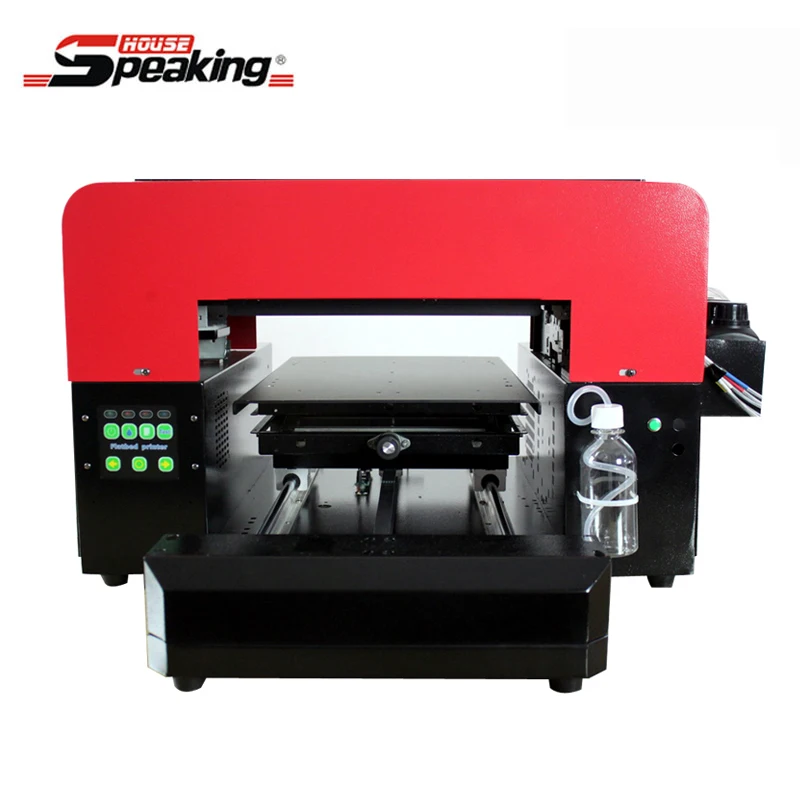
nine0173 Cons:
High price.
3. Choc Creator V2.0 Plus
When talking about which chocolate 3D printer to buy, it is worth mentioning the numerous advantages of Choc Creator V2.0 Plus. The new model has become more perfect: the developers have worked hard to eliminate the shortcomings of the previous version. The modern model has small dimensions, thanks to which it can be used in any kitchen, and the uniform heating of the syringe ensures high-quality and uninterrupted operation. In practice, the chocolate printer has shown tremendous potential: it prints complex figures from chocolate. nine0003
Pros of :
Attractive appearance;
Uninterrupted work;
Durability;
The ability to create durable and beautiful chocolate figures.
Cons :
4.
Food 3D printer Choc Creator V2.0 Plus with cold chamber
The new version of the Choc Creator V2.0 Plus printer is equipped with cooling chambers by popular demand. Users say that maintaining the optimal temperature in the room to preserve the integrity of chocolate figures is too problematic: therefore, the new device cools the raw materials. The price of a food 3D printer with a cooling system is slightly higher than a classic one, but the high performance of the final product justifies any costs. nine0003
Pros of :
Availability of a cooling system for finished products;
High printing precision;
Long service life;
Ease of use: you can turn the fans on and off with the side buttons.
Cons :
High price.
Attention! Confectionery food 3D printers are often used by artists to create edible masterpieces.
This is a unique technology that helps to unleash the creative potential of the chef.
5. byFlow Focus
Food printer from the Dutch company byFlow, which specializes in 3D printing of food. The compact high-tech device is used for the bakery industry, and the cartridges are suitable for the application of any pasty ingredients. nine0003
Pros:
Cons:
6. Chefjet Pro
Buying a ChefJet Pro food printer is a must for people who dream of making bright and stylish sweets. The device is created on the principle of inkjet printing: sugar-containing powder materials are used instead of paints. The final product is made by powder layering. The printer is suitable for combining different shades and creating gradients. nine0003
Pros:
The ability to create unique flavors;
Neat and bright printing;
Aesthetic appearance of the device.

Cons:
- nine0015
High price.
7. Foodini
The 3D food printer from Foodini works on the principle of a stationary printer, but instead of printing inks, layer-by-layer imposition of edible raw materials is used: dough, cream, chocolate, cream, etc. The device is versatile: the user himself can choose the material, or use ready-made cartridges with products.
Pros:
Practicality; nine0003
High build quality;
Attractive appearance;
Availability of an online platform with unique recipes.
Cons:
8. Mmuse – Chocolate 3D Printer
The MMuse closed 3D printer is suitable for chocolate printing. Chocolate beans are used as raw materials: they are heated in an extruder and fed to the work surface through the print head.
nine0003
Pros:
Cons:
9. ZBOT Commercial Art Pancakes Printer F5
ZBOT Commercial Art Pancakes Printer F5 3D Printer
A food printer from Chinese manufacturers is used in the process of making pancakes of various shapes. Ease of operation allows the device to be used by children under adult supervision. nine0003
Pros:
Ease of operation;
High build quality;
Affordable cost.
Cons:
10. ZMorph VX
A multifunctional 3D printer capable of printing not only food, but also rubber, ABS plastic, polylactide, PVA, nylon, elastic and metal materials. The product is able to print with chocolate, butter, cookies, icing and other ingredients. In addition, there is a function of engraving and CNC milling. nine0003
Pros:
Cons:
High price.

Selection guide
The modern market offers a wide range of food printers. Before making a purchase, you need to carefully study the characteristics of each model and build on your own preferences. Experts have created several recommendations for choosing: nine0003
In case you want to create realistic images for confectionery 3D printing, pay attention to the diameter of the nozzle: the narrower it is, the more accurate the image will be;
- nine0007
It is better for people living in regions with a warm climate to purchase chocolate 3D printers with a cooling system: such devices ensure that the figurines are kept at the optimum temperature;
The possibility of self-refilling the cartridge is the most practical and economical way to operate the printer;
Print speed is an important consideration for restaurant owners. Large batches of dishes must be produced quickly, and for home use this is not a very strict selection criterion.

Output
In the catalog of our online store, you can choose the best food printers from famous brands to create culinary masterpieces. Explore our range, learn about the characteristics of each printer and make great purchases. nine0003
#Useful
Expert in the field of additive and subtractive technologies, 3D equipment and CNC machines with over 10 years of experience.
Share
all materials
how it works, a review of culinary (confectionery) models and examples of work for cakes and chocolate printing products. Interest in 3D food printing is understandable - every year manufacturers release new models that open up more and more prospects for owners of 3D printers. In the article we will talk about the device of a 3D food printer and what can be done with it. We'll also talk about 3D printing with sugar and chocolate, edible prints on drinks, and even 3D pancakes. Get ready to be amazed - the scale of food printing on 3D printers will amaze even the most sophisticated user.
nine0003
How it works and types of devices
The principle of operation of a 3D food printer is similar to a conventional inkjet printer. The only difference is that instead of simple ink cartridges in a food 3D printer, food coloring cartridges are used. The memory of the device allows you to store many recipes. To print the desired dish, you just need to select the saved recipe and press the button. After the dish is sent to print, the printer will begin to lay out the ingredients in layers on the work surface or directly on the plate. The printed dish can be sent to cool in the refrigerator or baked in the oven. nine0003
Views
Despite the fact that 3D food printing technology is the youngest in the field of 3D modeling, it is dynamically developing and improving in several directions at once. Food 3D printers have significant differences and are divided into several types:
- Food extrusion type 3D printer - this type of device extrudes the edible mass layer by layer onto the work surface until the dish is completely formed.
The operation of the printer is controlled by a computer, on which the three-dimensional model of the object and the recipe are located. The printer itself, like its inkjet counterparts, is very simple - it consists of a table and a print head. The head moves along three coordinate axes, and an extruder is placed inside it to heat the mixture. The extruder is the main element of extrusion type printers. The printing ingredients are filled into a special syringe, which is placed in the print head. A significant disadvantage of this type of device is that the more complex the model in terms of composition and color scheme, the more often you will have to stop printing and replace the syringe. Extrusion-type printers include Chokola 3D - the device allows you to work with chocolate and pasty ingredients. nine0012
Please note! The smaller the diameter of the nozzle through which the raw material is squeezed out, the neater, more accurate and more realistic the printed dish will be.
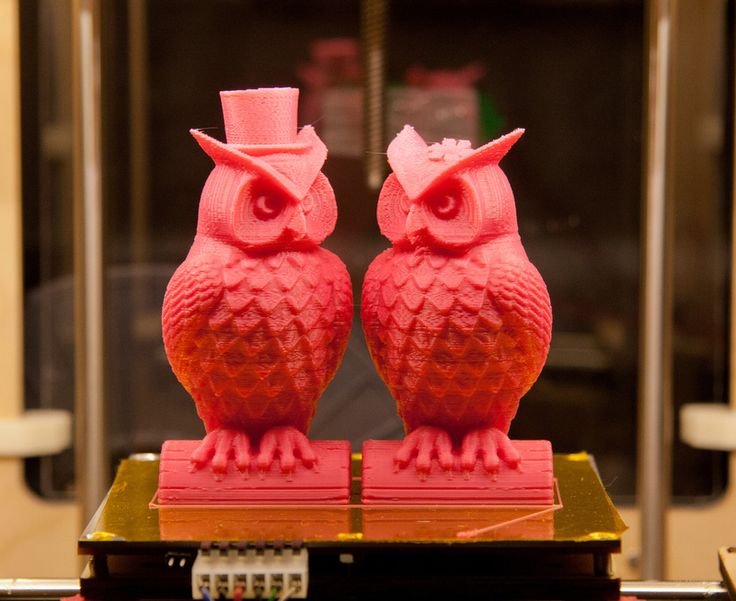
- 3D food carousel printer - despite the fact that the main working element of this type of printer is an extruder, such devices are called carousels because of the feed mechanism. The carousel 3D printer rotates over the working surface of the container with raw materials, selecting the desired ingredient and squeezing out the dosage of the product indicated in the recipe. Outwardly, the printer really resembles a kind of carousel - containers with products rotate at a slow pace over the table. An almost unlimited number of recipes can be stored in the base of a carousel-type food 3D printer, and special skills are not needed to use it. All that is required from the user is to simply press a button and start printing. The carousel printer independently dispenses raw materials, alternately squeezing out the food mixture from the desired container. Depending on the model of the device, the containers can be from 4 to 16 pieces. Author's product from Martha Stewarts Crafts - the Cricut Cake carousel printer will help you create an original cookie or decoration for a festive cake.
The owner of the printer just needs to press the start button - everything else will be done by Cricut Cake. Included with the device is a large cookbook with ideas for creating real edible works of art. nine0012
What can be done with a 3D food printer?
A wide range of 3D compatible ingredients allows you to create virtually any 3D model - the scale is limited only by the user's imagination. With the help of a food 3D printer, you can create figures of any complexity that will give even a simple cake a designer look.
Three-dimensional models of the bride and groom or any hero of the occasion; mask-cast of chocolate; planes, cars and cartoon characters on cakes for children; voluminous bouquets; edible figurines; original inscriptions and company logos - all this can be printed on a food 3D printer. nine0003
That is why such devices are gaining more and more popularity in hand made confectioneries - exclusive products attract customers and emphasize the professionalism of the creator.
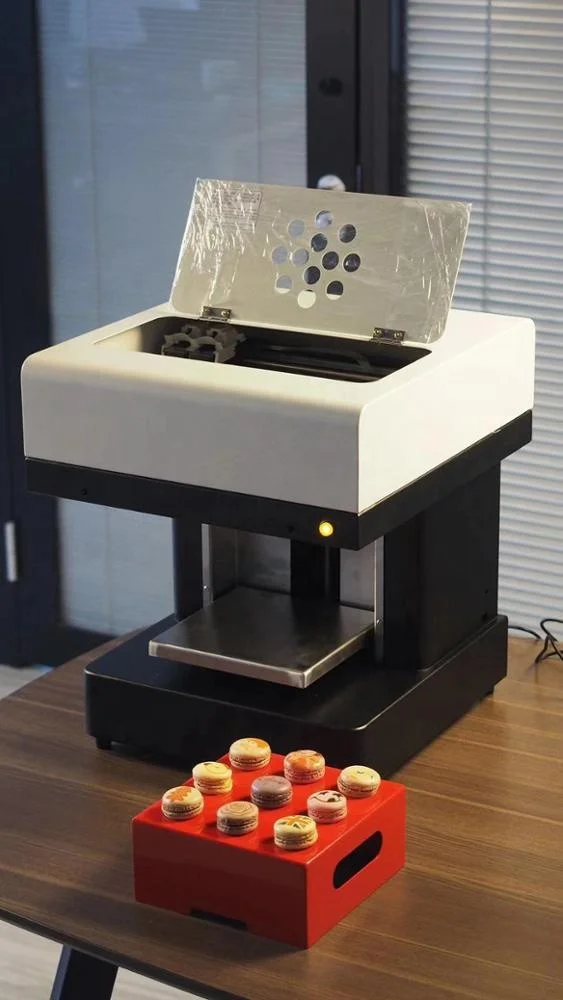
Printing pancakes
If you are not impressed by unusual cake decorations and original edible models, and you think that 3D food printing is just pampering, then especially for you and other connoisseurs of a rational approach, manufacturers have released 3D printers that bake pancakes. The device is a dream of housewives and pancake lovers, it costs more than a pancake maker or an ordinary frying pan, but can even the most modern pancake maker bake pancakes in the shape of a dinosaur, your favorite character or even your own head for breakfast? nine0003
As an example, consider the PancakeBot model, which not only bakes pancakes and pancakes, but also knows how to create shadows and halftones. Thanks to these unique features, 3D images printed on the PancakeBot are as realistic and voluminous as possible. During the printing process, the printer immediately fries the products.
The PancakeBot uses a heated non-stick surface as its working base and computer controlled heat and extruder action.
The model is equipped with one print head, connects to a computer via an SD card or USB cable. The productivity of the printer is 100mm/s. nine0003
Like any device, PancakeBot and other 3D food printers have their advantages and disadvantages.
The main drawback of the design of printers that print pancakes, users consider the inadmissibility of even the slightest lumps in the dough. The fact is that even the smallest lump can clog the nozzles of the device and stall the printing process. The problem is solved simply - just monitor the viscosity of the dough.
The advantages of PancakeBot are highly appreciated by artists and creative personalities - the user can draw absolutely everything that his talent and imagination allow him to draw. nine0003
Indisputable plus - simple ingredients. PancakeBot does not require expensive raw materials - the printer works with a simple pancake dough, the taste of which depends only on the user.
Please note! The manufacturer's website notes that any image can be downloaded to the PancakeBot's SD card, be it pictures downloaded from the Internet or your own photos.
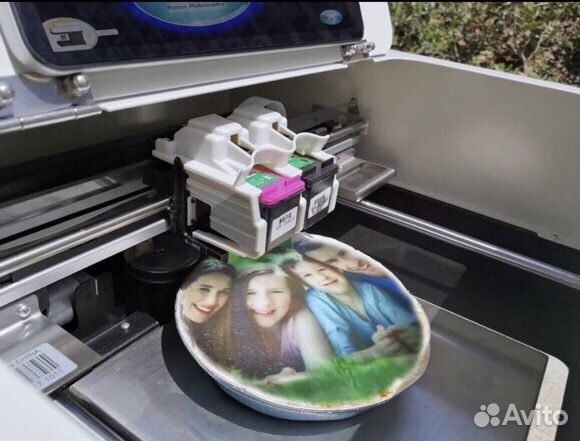
Another benefit of PancakeBot is its availability. The device is relatively inexpensive. nine0003
PancakeBot will suit both private mini-confectioneries and catering chains, as well as simple pancake lovers — unusual pancakes and pancakes will delight children, decorate any holiday and surprise customers.
Sugar printing
Back in 2013, architects Kyle and Liz von Hasseln founded The Sugar Lab and, to the delight of sweet lovers, found a new application for 3D inkjet printing. Using the ChefJet confectionery food 3D printer as an example, we will talk about the production of three-dimensional models from sugar. nine0003
ChefJet applies a thin layer of granulated candy to the work surface and then selectively glues it with water, which is fed through the nozzle of the print head. The ChefJet head follows the contours of a digital model, moving in two dimensions. The printer then applies a new layer of ingredients, repeating the process to form the next layer of the shape.
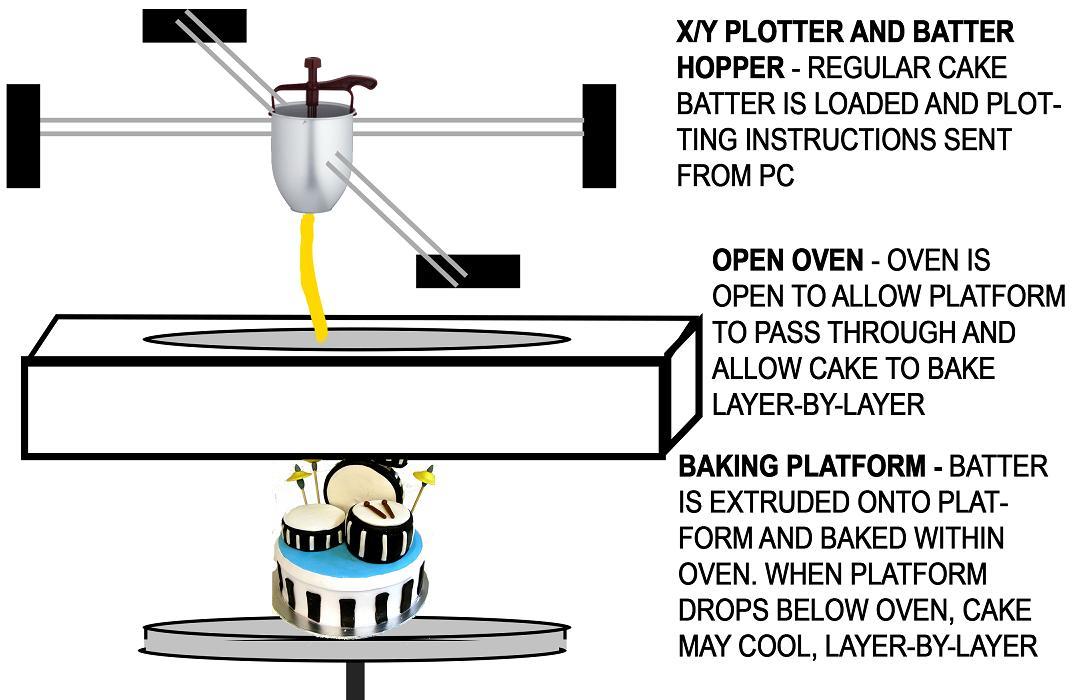
Food additives and dyes make it possible to create models of different flavors and colors. nine0003
The ChefJet is a little too big for a typical kitchen, but the size of the working area inspires respect and allows you to decorate the average birthday cake.
Even the most inexpensive version of ChefJet has a significant plus - the printer can print mint, vanilla, chocolate, cherry and apple candies and icing. The disadvantage of the basic configuration is the inability to print multi-color sweets.
More advanced version of ChefJet allows you to print different colors of candy and mix flavors. Only one comparative disadvantage overshadows the professional model - the dimensions of the device have increased somewhat. nine0003
Perhaps the main advantage of ChefJet is the ability of the printer to work not only on powdered sugar, but also on caramel and even on chocolate chips.
The use of additive manufacturing allows ChefJet to create highly geometrically accurate sugar models.
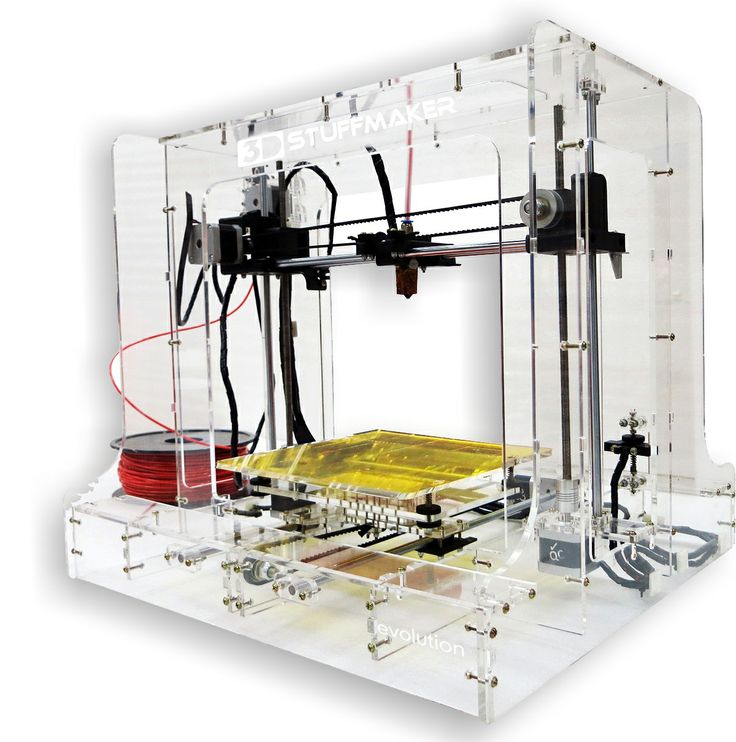
Please note! ChefJet can even print hollow sugar products with free-flowing fillings in any flavor. For example, it is quite possible to print an edible rattle - ChefJet accurately prints edges, avoiding sharp corners and unsafe chips. nine0003
The ChefJet 3D Food Printer is designed for professional chefs and confectioners who will operate printers in bakeries, pastry shops and restaurants. Especially for users, the manufacturer plans to complete the devices with software and a digital cookbook. As an example, the manufacturer cites the possibility of printing figurines for wedding cakes.
Perhaps the high cost of ChefJet is the main disadvantage of this printer. However, there is always an opportunity to save money - on the market you can find used devices in good condition at a lower price. nine0003
Chocolate printing
Choc Creator 2.0 Plus is the best example of a chocolate printing 3D food printer.
In our opinion, this is one of the most stable working models, affordable and creating real miracles from chocolate.
Choc Creator 2.0 Plus is the perfect assistant for chocolatiers, professional confectioners and just lovers of real Belgian chocolate.
Choc Creator 2.0 Plus was developed taking into account all the disadvantages of the previous version - the creators improved the convenience and technology of work, but did not forget about the design of the device - the new Choc Creator conquers with its compact dimensions, high performance, intuitive interface and unlimited possibilities for working with chocolate . nine0003
A few words about the design - the printer is equipped with a 5-inch touch screen. The start and settings buttons are conveniently located on the screen.
Choc Creator 2.0 Plus will fit both in a professional pastry chef's kitchen and in an apartment - the printer can easily be placed on a bar counter, window sill and any other flat surface.

Another indisputable plus for visuals is the opportunity to observe the process of printing chocolate figures.
Choc Creator 2.0 Plus is a master of chocolate, from miniature cake decorating figures to large chocolate models. nine0003
The manufacturer's concern for its customers deserves special attention, which is felt from the moment you open the box with the printer. First, Choc Creator 2.0 Plus is in assembled condition. Secondly, a small transparent suitcase, complete with the necessary accessories, emphasizes the premium model. Inside the case are:
- stainless steel syringe;
- two nozzles of different diameters;
- special needle for cleaning clogged nozzles; nine0012
- magnets for easy paper fixing;
- 5 loading heads;
- Stylish USB flash drive in gold casing;
- height calibration disc;
- hex.
The manufacturer has not forgotten about the brush for cleaning the syringe, the stylus for the touchscreen and other useful little things that express concern for the buyer.
It would seem that Choc Creator 2.0 Plus is one solid plus, but there is also a relatively small drawback - the printer only works on high-quality raw materials without additives. nine0003
The creators of the printer strongly recommend using only Belgian chocolate with a cocoa content of at least 54.5%.
Choc Creator 2.0 Plus will suit both professional chocolatiers and confectioners, as well as simple connoisseurs of quality chocolate.
3D printing on drinks
Just a few years ago, only a few baristas could draw a simple pattern on coffee. The process took time, and the result did not always meet the client's expectations. Serious competition for the creative workers of coffee houses and their flowers on the foam was 3D printers. These devices can print anything on any drink, including milkshakes and beer. nine0003
CafeMaker is a 3D inkjet printer that can print images on various types of drinks, and can do it with three food colors at the same time.
CafeMaker's print speed is 10 seconds/cup, allowing you to design your drinks in seconds.
Important! The CafeMaker doesn't just print on drinks, it can also print on small cream cakes.
An indisputable plus of CafeMaker is its own CupShow application, in which you can select pictures for printing from those saved in the device’s memory, as well as create inscriptions, logos, or even print personal photos.
CafeMaker can print with a single ink or a combination of cyan, red and yellow.
The process of refilling CafeMaker is similar to working with a conventional inkjet printer - dye is slowly poured into the cartridge, and then the finished cartridges are placed inside the device. nine0003
A small drawback of the device lies in its requirements for a cup or glass - containers should not be transparent, their height should not exceed 18 cm, and their diameter should not exceed 11 cm.
restaurant - any client will be happy to receive a cup of coffee, a glass of beer or a cupcake with an original image.
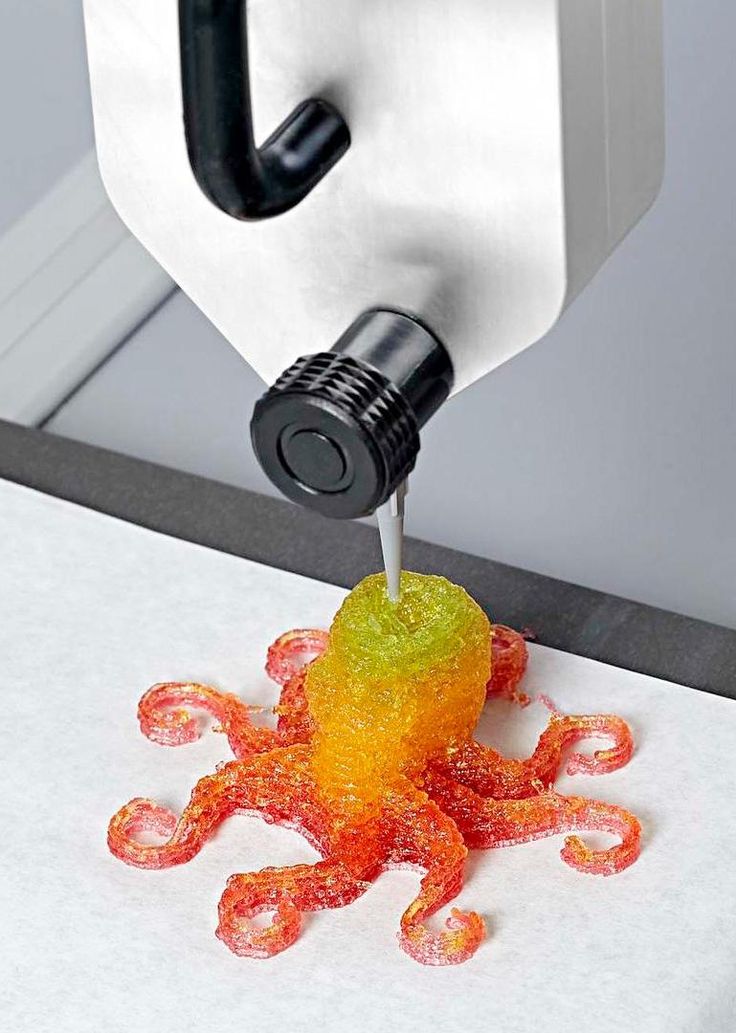
Printing with paste ingredients
Printing with sugar and chocolate is no longer just a fantasy. Now you will not surprise anyone with three-dimensional models from familiar products, so 3D printer manufacturers decided to take a step towards lovers of everything unusual and create devices that print almost any product from various ingredients. nine0003
The Foodini 3D printer will give a confident rebuff to multicookers and other kitchen gadgets - the device can independently print dumplings, prepares the finest Italian pasta, cookies, donuts covered with icing, and even hamburgers.
Up to five different textures can be loaded into the Foodini printer at the same time. Thanks to the nozzles of different diameters, which are supplied with the printer, a wide variety of dishes are suitable for printing.
Unlike its counterparts, Foodini has firmly taken its place in the restaurant business. Of course, not all establishments can afford an expensive unit.
For example, the Foodini printer is used in one of the most popular restaurants in Barcelona, La Enoteca. One of the institution's most unusual dishes is seafood puree, which is almost impossible to decorate by hand so gracefully. nine0003
The print speed of the Foodini printer is 100 mm/s, which is another advantage of the device.
Perhaps the only relative disadvantage of Foodini is its high price, but it is compensated by the increased interest of customers in the dishes produced and, as a result, an increase in the institution's profit. The Foodini printer is ideal for restaurants and other catering establishments that want to emphasize the creative approach of the management and the chef, as well as the high class of the company. nine0003
What kind of raw material is used for printing?
The following ingredients can be used as raw materials for 3D edible printing:
- plain chocolate and chocolate chips;
- food mastic;
- sugar;
- curd mass;
- fish, meat and liver pates;
- cheese;
- vegetable and fruit pastes;
- flour;
- food colors and flavors.

Learn more



